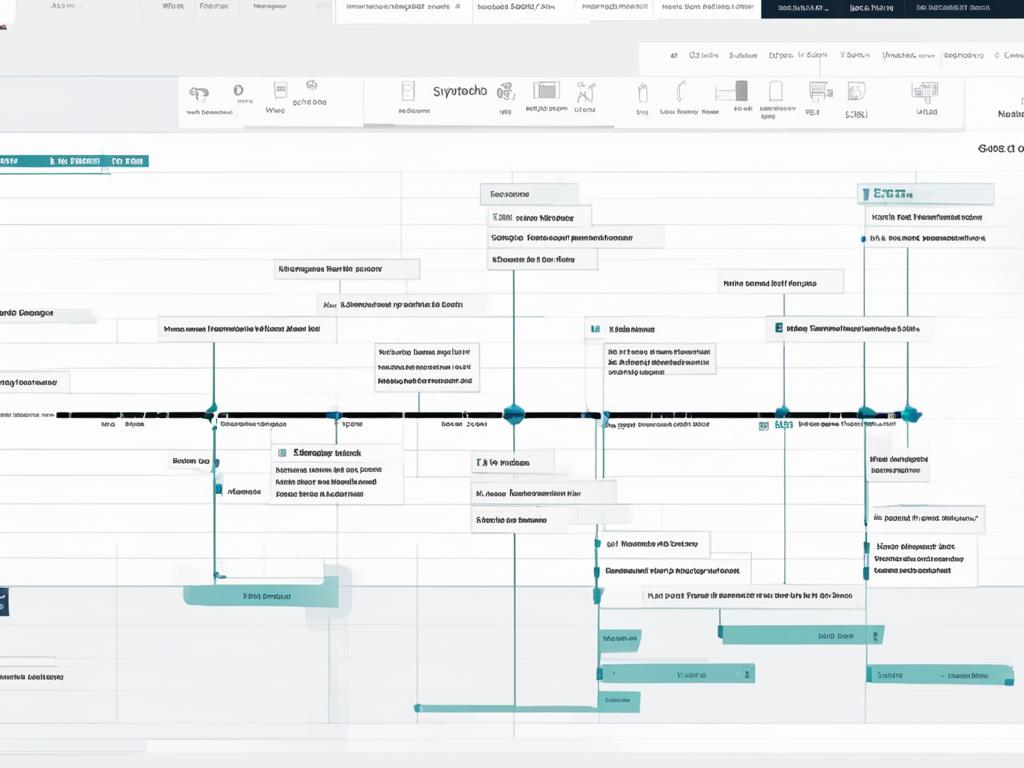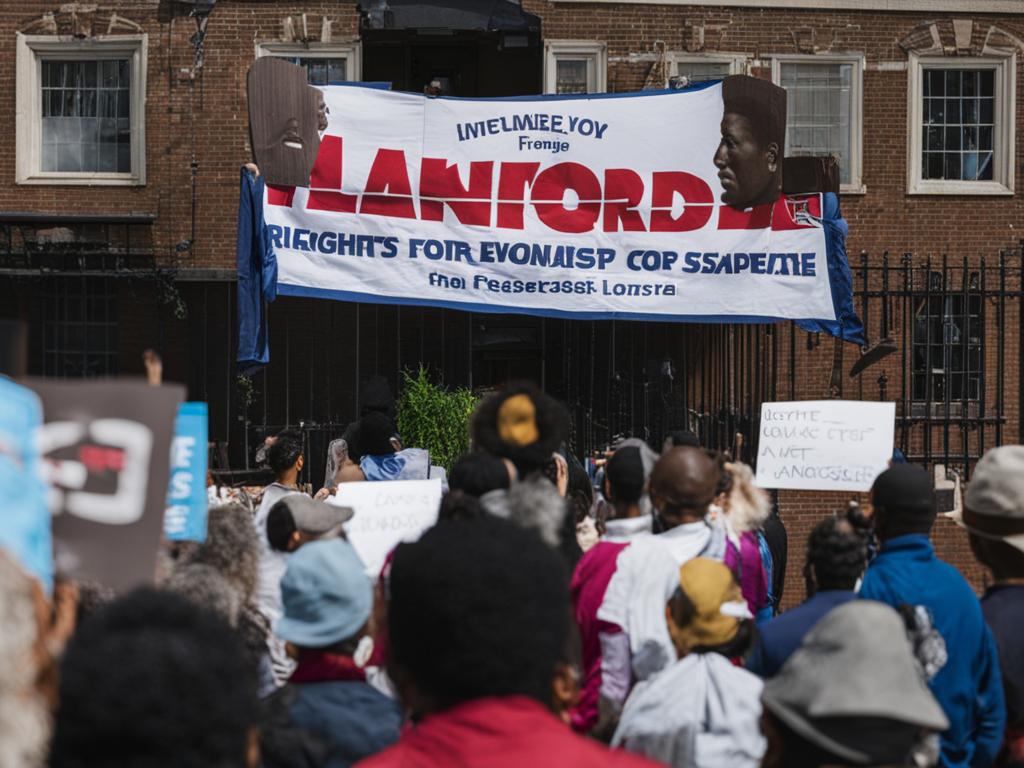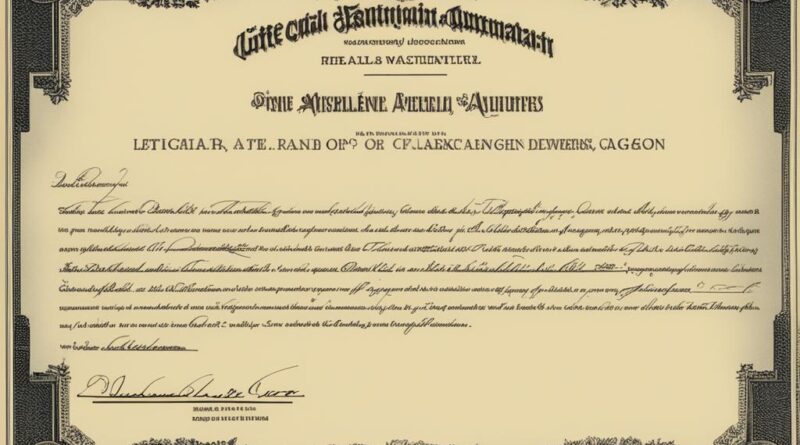Landlord Harassment Letter: Your Legal Guide
When the walls of your home seem to close in due to the unwarranted actions of your landlord, knowing how to defend your tenant rights can be your shield. Navigating the treacherous waters of rental disputes demands a steadfast knowledge of legal avenues, and a landlord harassment letter is a pivotal tool in your arsenal. This essential legal guide serves as your first step towards articulating your grievances formally, asserting your rights, and heralding an equitable resolution. With precise attention to the details of harassment, substantiation through evidence, and clear communication of your desired redress, you can lay down the cornerstone of your legal fortitude.
Key Takeaways
- Understand your rights and the importance of addressing landlord harassment proactively.
- A well-crafted harassment letter can articulate your stance and catalyze a fair resolution.
- Identifying and documenting harassment instances strengthens your position during rental disputes.
- Being informed is pivotal—know the laws that protect you as a tenant.
- Maintain a professional tone throughout your correspondence to ensure the seriousness of your claim is respected.
- Be clear about your desired outcomes to guide the resolution process effectively.
Understanding Landlord Harassment and Tenant Rights
When it comes to navigating the complexities of a rental agreement, striking the delicate balance between landlord oversight and tenant autonomy is key. An understanding of what constitutes landlord harassment is vital to tenant protection. Such knowledge not only empowers renters to recognize inappropriate landlord behavior but also helps them comprehend their rights and the eviction process. Tenants who are well-informed can take the necessary legal action to maintain a secure and peaceful living environment.
Recognizing Harassment in a Rental Property Scenario
Landlord harassment can be subtle and insidious, with the potential to undermine a tenant’s sense of security and comfort. It ranges from failing to perform necessary maintenance to the issuance of wrongful eviction notices. Understanding the spectrum of landlord behaviors that qualify as harassment is the cornerstone of tenant advocacy and can ward off potential legal disputes.
Federal and State Protections for Tenants
Federal and state laws provide a safety net for tenants against harassment. For instance, the Fair Housing Act offers nationwide protections, while the California Civil Code supplies additional security with statutes explicitly prohibiting landlord retaliation and discrimination. These regulations play a pivotal role in the eviction process, ensuring tenants are shielded from unfounded legal action.
Key Indicators of Harassment from a Landlord
Recognizing the signs of landlord harassment is a fundamental component of tenant protection. Key indicators include, but are not limited to, physical intimidation, financial threats with no merit, and calculated maneuvers intended to disturb the quiet enjoyment of the premises. Awareness of such actions enables tenants to promptly address and curb harassment.
| Form of Harassment | Examples | Tenant Protection Measures |
|---|---|---|
| Physical Intimidation | Blocking access, changing locks without notice | Document incidents, consider immediate legal advice |
| Financial Threats | Baseless fees, threats to increase rent illegally | Review lease agreement, report to housing authorities |
| Unlivable Conditions | Withholding repairs, utility shutoffs | Request repairs in writing, claim rent abatement if applicable |
| Privacy Violations | Unauthorized entry, surveillance | Insist on proper notice, file a harassment claim if persistent |
These protective measures not only provide a framework for tenants to challenge harassment but also enforce their rights, encouraging a lawful and respectful rental experience.
Preparing to Draft Your Landlord Harassment Letter
As a tenant in a rental property, it’s crucial to prepare meticulously before drafting a landlord harassment letter. This document will serve as an official record of the issues you’re experiencing, so thorough preparation is key to enforcing your tenant rights and setting the stage for a potential resolution.

Documenting Incidents and Collecting Evidence
Gathering detailed documentation is the first essential step. This involves recording every instance of harassment, noting the date, time, and nature of each incident. Accompanying this timeline with tangible evidence, such as email exchanges or photographs of damages, will add credence to your claims and enhance the letter’s impact.
Reviewing Lease Agreements and Legal Provisions
An in-depth review of your lease agreement is required to identify any breaches on the landlord’s part. Understanding the stipulations of your lease and aligning them with state laws governing tenant rights secures a legal basis for your claims. This review solidifies your position by demonstrating a clear understanding of your legal standing as a tenant.
Identifying Desired Outcomes
Knowing what you seek from the communication shapes your approach effectively. Whether it’s an end to the harassment, necessary repairs, or other remedial actions, clarifying the expected outcomes dictates the trajectory of the dialogue and provides clear objectives for the landlord to address.
The Importance of a Professional Tone in a Landlord Harassment Letter
Maintaining a professional tone is a crucial aspect of drafting an effective landlord harassment letter. It serves as a reflection of the tenant’s intention to resolve issues through respectful communication and supports the legal standing of their claims. While emotions may run high due to the nature of the harassment, it’s essential to approach the matter with the utmost professionalism to uphold tenant rights and the seriousness of the issue.
When composing your letter, remember that you’re laying the foundation for potential legal action. A well-articulated letter that adheres to a respectful tone can enhance your credibility not only with your landlord but also with any court or authority that may review the communication later. Here are some key points to include in your letter to ensure that the tone remains professional:
- Start with a proper salutation and address the landlord or the managing party formally.
- Clearly state the specific issues you’re experiencing and reference the relevant sections of your lease agreement that may be violated.
- Avoid derogatory language, threats, and overly emotional phrasing that could weaken your position.
- Be concise and stick to the pertinent facts of your situation, avoiding unnecessary details.
- Sign-off with a courteous closing statement, leaving the door open for constructive dialogue.
| Do’s | Don’ts |
|---|---|
| Use clear and formal language | Use slang or jargon |
| Document facts and incidents accurately | Include irrelevant personal opinions |
| Express a willingness to find a mutually agreeable solution | Make unreasonable or aggressive demands |
| Include evidence to support your claims | Submit a letter without proof or substantiation |
A well-constructed letter can serve as a potent tool in asserting your tenant rights and highlighting the urgency of addressing your concerns. Ultimately, striking a balance between firmness and courtesy can foster a path toward an amicable resolution.
Stating the Facts: How to Describe Harassment Incidents
When tenants face harassment incidents, the ability to deliver a factual description of each event is pivotal for tenant protection. It is not enough to merely allege harassment; the claim must be supported with a robust and unambiguous narration of facts. Below are the steps to properly articulate harassment incidents in your letter for maximum effect.
- Gather Comprehensive Details: Consolidate all relevant information regarding the harassment, including date, time, location, and nature of each occurrence. This factual compilation should be devoid of subjective language to maintain credibility.
- Compile Evidence: Evidence might include correspondence, photos, or witness testimonies. This documentation serves as a backbone for your claims and showcases the severity and pattern of the landlord’s actions.
- Present Incidents Chronologically: Organizing the events in a timeline provides clarity and demonstrates how the harassment has escalated or persisted over time.
- Be Precise: Avoid generalizations or vague statements. Specificity in describing harassment incidents is critical in painting an accurate picture of the events.
To illustrate the approach, consider the following template of how incidents may be presented within a landlord harassment letter:
| Date | Incident | Witness(es) | Evidence |
|---|---|---|---|
| March 5, 2023 | Unannounced entry to the apartment at 3 PM. | Roommate: Alex Smith | Photo of landlord entering the unit. |
| March 12, 2023 | Refusal to repair leaking sink reported 2 weeks prior. | – | Email requests to landlord dated February 25, 2023. |
| March 20, 2023 | Threatening behavior and verbal insults during rent collection. | Neighbor: Jamie Lee | Audio recording of conversation. |
By systematically detailing the harassment incidents, tenants create a compelling narrative that empowers them to seek justice and defend their rights. Remember, a factual description not only serves to communicate to the landlord but also prepares the ground for legal scrutiny, should that become necessary.

Incorporating Evidence and Attachments in Your Letter
When looking to resolve a rental dispute, the inclusion of evidence in your landlord harassment letter is not just suggested, but essential. Evidence serves as the bedrock of your case, illustrating the credibility of your claims and enhancing your negotiating power when potential legal action is considered. By systematically incorporating evidence and related attachments, you compile what’s akin to a pre-trial dossier, fortifying your position in any rental dispute documentation.
The most effective way to present your evidence is through a clear and structured format, one which allows for immediate comprehension and easy reference during any discussion or hearing. The following table offers an outline of how to organize various types of evidential documentation:
| Type of Evidence | Description | Purpose |
|---|---|---|
| Written Communications | Emails, text messages, or written notices from the landlord | To demonstrate a pattern of harassment or unprofessional communication |
| Photographic Evidence | Images showing property damage, neglect, or evidence of unauthorized entry | To visually substantiate claims of neglect or harassment |
| Witness Statements | Signed affidavits from neighbors or other tenants who have witnessed harassment | To lend additional credibility to your account through third-party observations |
Evidence is not merely about quantity but the quality and relevance it bears on your specific concerns. As such, ensure that each piece of documentation is directly tied to an incident of harassment. Legal action can only be pursued convincingly when your allegations are thoroughly backed by evidence that can stand up to scrutiny, reinforcing the gravity of your rental dispute documentation.
In the context of the landlord-tenant relationship, the presentation of evidence within your letter must be approached with care, ensuring that the tone remains formal and communicates the seriousness with which you view these grievances. Attachments should be referenced in the body of the letter, clearly indicating where relevant details can be found and how they support your case.
By methodically presenting evidence, one underscores their commitment to resolving ongoing issues while upholding their right to a safe and peaceful living environment.
Landlord Harassment Letter: How to Demand Action Legally
When faced with rental disputes, tenants may reach a point where the drafting of a landlord harassment letter is necessary. This legal request serves as a definitive action demand, aiming to bring about a swift resolution to ongoing issues. Acting within the scope of tenant rights, the purpose of this communication is to clearly delineate the nature of the problem, the outcome required to rectify the situation, and the timeframe in which the landlord must respond to avoid further legal steps.

Making a Clear and Legal Request for Resolution
For a tenant’s legal request to be effective, it must be transparent and precise. This means emphasizing the specific actions expected from the landlord as a resolution. Whether it is halting unlawful entry, making necessary repairs, or ceasing any form of harassment, the letter should detail each point with clarity to avoid ambiguity, paving the way for a favorable outcome.
Setting Expectations with a Response Deadline
In the interest of timeliness, including a reasonable deadline for the landlord’s response is imperative. This period should allow sufficient time for the landlord to assess the situation and take action, yet not be so extended as to prolong the tenant’s distress. By establishing this deadline, tenants assert their seriousness and the urgency of their demands, expediting the pursuit of a resolution.
Understanding the Consequences of Ignored Harassment Claims
If a landlord neglects to address harassment claims within the stipulated deadline, tenants must be prepared to escalate matters legally. This could involve reporting the issue to housing authorities or even proceeding with legal action. It is critical for tenants to convey the potential consequences of inaction within the letter, which serves as a not-so-subtle reminder of the legal ramifications of ignoring such serious allegations.
The Role of Housing Authorities in Tenant Protection
In the landscape of tenant rights, the influence of housing authorities is undeniable. Serving as crucial intermediaries, they provide much-needed oversight and support for those navigating the complexities of rental living. Despite not directly engaging with every dispute, their broader mission encompasses the enforcement of fair housing regulations and acting as a beacon for tenant protection. Faced with housing concerns, understanding what housing authorities can and indeed cannot do, is pivotal for tenants seeking a resolution, particularly when potential legal assistance may be necessary.
What Housing Authorities Can and Cannot Do for You
Housing authorities have a defined role, actively offering guidance and enforcing housing laws to ensure safe and fair living conditions. Their capacity to mediate disputes, although limited, includes the power to investigate filed complaints regarding harassment or discrimination. Enforcement is within their purview, where violations of housing standards can result in penalties for landlords.
However, their influence has its limits. Direct legal representation in court is not typically offered by housing authorities, with their function being more investigatory and regulatory than a personal legal advocate. Still, the recourse they provide is invaluable as they lay the groundwork for escalated measures, if needed.
How to Reach Out to Your Local Housing Authority
Commencing contact with your local housing authority requires tenants to present their concerns formally. When lodging complaints, the emphasis on clear, detailed accounts of the issue becomes critical. Garnering the support of housing authorities often involves a thorough compilation of evidence, a chronological narrative of events, and a well-documented portrayal of the grievance.
When to Escalate Issues Beyond The Landlord
Carrying the pursuit of justice beyond the realm of landlord-tenant communication generally transpires when the landlord’s reply is non-existent or insufficient. As pressing concerns arise from the lack of proper response,  escalating the matter to housing authorities signifies a tenant’s commitment to uphold their rights. It represents a conscientious decision to engage with entities equipped to enforce those very rights through added layers of legal assistance and a more objective examination of the situation.
escalating the matter to housing authorities signifies a tenant’s commitment to uphold their rights. It represents a conscientious decision to engage with entities equipped to enforce those very rights through added layers of legal assistance and a more objective examination of the situation.
Below is a table outlining the typical areas of support provided by housing authorities, contrasted with needs they may be unable to directly address:
| Support Offered | Limitations |
|---|---|
| Investigate complaints | Direct legal representation |
| Enforce housing regulations | Immediate dispute resolution |
| Guidance and information on rights and resources | Personal advocacy for individual tenants |
| Refer tenants to legal aid | Intervene in personal disputes between tenant and landlord |
Empowering tenants through awareness, these bodies ensure a network of proactive measures is always within reach, championing tenant protection and fostering a just housing environment.
Navigating the Eviction Process with Knowledge of Your Rights
For tenants, grasping the eviction process and asserting tenant rights is a critical form of legal defense against unlawful eviction. Knowledge of proper eviction proceedings ensures that tenants can safeguard their interests and stand against any form of harassment looking to bypass due process. A thorough understanding of these principles is not just empowering; it’s a necessary shield in the realm of tenant-landlord relations.
Landlords are legally obligated to follow a set of protocols before evicting a tenant. These rules are in place to prevent wrongful displacement and to ensure that all parties are treated fairly. In the face of eviction, tenants should be reassured that the law is on their side, as long as they’ve upheld their part of the rental agreement.
Educating oneself about the eviction timeline, necessary documentation, and court representation can drastically alter the outcome of an attempted eviction. Below is a detailed table that outlines the usual steps in the eviction process, shining a light on the crucial stages where knowledge of one’s rights can make a significant difference:
| Eviction Step | Tenant Action | Legal Considerations |
|---|---|---|
| Receipt of Notice | Review the notice for legality and compliance with state laws | Notices must be served in a manner prescribed by law and include specific information |
| Response Period | Prepare a written response and gather evidence if disputing the eviction | Tenants typically have a set number of days to respond according to state laws |
| Court Hearing | Present evidence, testify, and potentially provide witness testimonies | Failure to appear can result in a default judgment for the landlord |
| Judgment & Appeal | Understand the court’s decision and explore options for appeal if necessary | Judgments can usually be appealed within a tight timeframe, and specific procedures must be followed |
| Execution of Eviction | Evacuate the premises by the given date or face law enforcement removal | A court order is required for physical eviction; landlords cannot take this action independently |
“Knowing your rights can be the difference between having a roof over your head and facing unwarranted displacement. The law provides a buffer against unwarranted evictions, but it is incumbent on the tenant to be informed and proactive.” – National Tenant Rights Association

Armed with this knowledge, tenants can build a formidable legal defense, making it imperative that the correct steps are taken to challenge an eviction. It cannot be overstated how critical it is for tenants to consult with legal advisors, seek help from tenant unions, or use community resources for assistance. In the end, it is this preparedness and educated approach that will uphold justice and ensure fair treatment in the eviction process.
Tenant Advocacy: Finding Support During Rental Disputes
When faced with rental disputes and harassment, tenants can feel overwhelmed and uncertain about where to turn for help. Fortunately, numerous legal aid and tenant advocacy groups are available to provide the necessary support and guidance during these challenging times. These organizations play a pivotal role in rental dispute resolutions, offering a range of services to defend tenant rights and promote community support.

Resources for Legal Assistance and Advocacy Groups
To effectively navigate through rental disputes, accessing legal aid resources is crucial. Tenant advocacy groups often provide free or low-cost legal advice, educate tenants about their rights, and may intervene in rental disputes to seek just resolutions. With a focus on justice and fair treatment, these advocates are dedicated to ensuring that the tenant’s voice is heard.
Community Organizations and their Role in Tenant Support
Community organizations serve as a bedrock for many tenants seeking assistance with housing issues. These groups specialize in uniting individuals from the community to forge a cohesive front against unfair landlord practices. They offer support systems and can act as mediators during legal proceedings, emphasizing the importance of solidarity and mutual aid within the community.
Importance of Solidarity with Other Tenants Facing Harassment
United we stand—this is especially true for tenants contending with harassment. Building solidarity among tenants can create a significant impact in dealing with obstinate landlords. Collective bargaining has the power to pave the way towards more amicable rental dispute resolutions and prevent future cases of harassment, ensuring a peaceful and respectful living environment for all.
“Together, we hold the power to enact change. By standing alongside one another, leveraging community resources, and advocating for our rights, we not only strengthen our individual cases but also foster an environment that upholds dignity and justice for all tenants.”
Conclusion
The journey of resolving rental disputes begins with arming oneself with vital legal knowledge and meticulously crafting a landlord harassment letter. Such a letter is not just a piece of communication but a powerful affidavit that concretizes the tenant’s grievances. Sending a harassment letter is the crucial first step in a series of legal action steps designed to establish boundaries and demand remedies for unjust treatment. Equipped with this guide, tenants can navigate the challenging waters of landlord-tenant relationships with confidence and the clarity that the law is on their side.
Empowering Tenants Through Legal Knowledge
Understanding tenant rights is tantamount to wielding a shield against harassment. The empowerment that comes from legal knowledge enables tenants to articulate concerns assertively and take appropriate actions. It is through this knowledge that justice seeking becomes not only possible but practical. Knowing what constitutes harassment, the intricacies of lease agreements, and state-specific laws is indispensable in upholding these rights and addressing disputes.
Taking the Next Steps After Sending Your Landlord Harassment Letter
After sending a harassment letter, tenants must be prepared for the next steps. This means readying oneself for potential dialogues, negotiations, or even legal proceedings if the situation escalates. Keeping meticulous records and maintaining safe rentals are intrinsic to these steps. It is here where clarity and commitment to seeking justice are pivotal in influencing the outcomes of these disputes.
Seeking Justice and Maintaining Safe Rental Relationships
In conclusion, tenants have the right to a peaceful living environment and recourse when that right is threatened. The path to maintaining safe rentals and seeking justice begins with the bravery to articulate the need for change through assertive communication. Ultimately, it’s about more than just addressing immediate grievances; it’s about strengthening the fabric of tenant-landlord relations for the future.
FAQ
What constitutes landlord harassment?
Landlord harassment is any unwelcome conduct from a landlord based on aspects such as gender, race, ethnicity, religion, disability, or sexual orientation. It includes a range of actions from neglecting maintenance and withholding amenities to baseless accusations and repeated property intrusions without notice.
What legal protections do tenants have against landlord harassment?
Federal laws like the Fair Housing Act, and depending on the state, specific statutes provide protection against harassment. They prohibit discriminatory practices and outline legal actions tenants can take against offending landlords.
How do I document harassment incidents from my landlord?
Document harassment by accurately recording each incident with dates, times, descriptions, and collecting any evidence such as written communications, photographs, or witness statements. This documentation is crucial for supporting a harassment claim.
Why is it important to maintain a professional tone in a landlord harassment letter?
A professional tone demonstrates respect and positions the complaint within a legal framework, increasing the chances of a favorable response and preventing the legitimacy of the complaint from being undermined.
How should I describe harassment incidents in the letter?
Describe harassment incidents factually with detailed accounts of the events, including context, dates, times, and any witnesses or evidence. Avoiding emotional language provides a clearer and concise narrative.
What type of evidence should be included with a landlord harassment letter?
Evidence can include written communications like emails or texts, photos of property damage, and witness statements. Attaching these helps reinforce the allegations and shows an organized approach to addressing the issue.
How do I legally demand action from my landlord in the harassment letter?
State your desired outcome clearly, provide specific resolution suggestions, set a reasonable deadline for a response, and outline the consequences of continued harassment. This can include potential legal actions or escalation to housing authorities.
What can housing authorities do to help with tenant harassment?
Housing authorities can provide guidance, enforce housing regulations, and in some cases, offer mediation services. They may investigate complaints and ensure landlords comply with housing laws.
What should tenants know about the eviction process to protect themselves from harassment?
Tenants should understand their rights during the eviction process, including the requirement for landlords to provide proper notice and follow legal proceedings. Knowledge of these rights helps defend against improper eviction practices.
Where can I find support and resources if I’m dealing with landlord harassment?
Support can be found through tenant advocacy organizations, legal aid groups, community organizations, and housing authorities. These resources can provide legal advice, representation, and sometimes pro-bono services.
How can tenant solidarity help in dealing with landlord harassment?
Tenant solidarity can lead to collective action, which enhances the pressure on landlords to adhere to fair practices, and it also allows for sharing resources and experiences to strengthen individuals’ positions in rental disputes.

